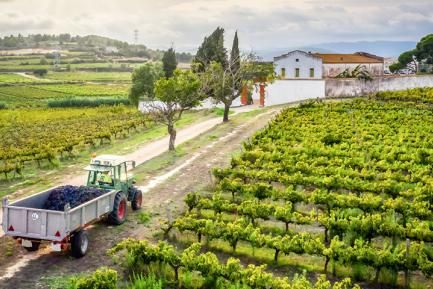Resilience and growth in the agrifood sector during the pandemic
The COVID-19 pandemic has highlighted the importance of the agrifood sector as a mainstay of the Spanish economy. During the months of lockdown, the entire food chain (which includes farmers, breeders, fishermen, cooperatives and the food industry, wholesalers, retailers, distributors and logistics operators) had to adapt quickly to secure the population's food supply. In retrospect, it is only fair to acknowledge the excellent response by the whole sector in tackling this challenge.
November 13th, 2020

- Available economic indicators show that the sector has been one of the least affected by the crisis. In fact, the primary sector's relative share of the total economy increased and the agrifood industry posted a much smaller decline than the manufacturing industry as a whole in Q2 2020. Similarly, in the area of employment, the sector has recorded fewer job losses and a smaller percentage of workers have been furloughed.
- The pandemic has led to a notable change in the food consumption patterns of Spanish households, with home consumption gaining weight. In fact, during the weeks of lockdown, consumption outside the home plummeted (i.e. hotel and catering industry). The use of e-commerce to buy food has also increased, in part to minimise travel and contact between people. We can examine these patterns in detail by using CaixaBank's own data on card expenditure via its POS terminals. In spite of the agrifood sector's good performance overall, we can see that the disruption to foreign tourism continues to harm the food service establishments aimed at international clients and, consequently, the sub-groups of agrifood products sold to such establishments for final consumption.
- On the other hand, the agrifood sector's relatively good performance during the crisis cannot be fully understood without considering exports. A large proportion of the sector's production is destined for export (around 50 billion euros worth), to the extent that Spain is the fourth largest exporter in the European Union and the seventh worldwide. With the crisis, agrifood exports have increased across the board, with the upturn in exports of citrus fruits to Europe and swine meat to Asia being particularly notable.
- The good positioning of Spanish agrifood products in international markets is the result of the efforts made in recent years to internationalise the industry, reflecting its high level of competitiveness compared with other agrifood-producing countries. But if the situation we are going through has demonstrated anything, it is that more digitalised companies are better prepared to adapt to a changing environment. Consequently, in order to become even more competitive, the sector needs to take advantage of the new digital technologies at all the different links in the food chain. Digital transformation also offers ways to resolve some of the major challenges facing the sector. For instance, precision-farming techniques can help to improve crop yields whilst also enhancing the sector's sustainability by using water and energy more efficiently.
- In short, the technological revolution of the century is transforming an agrifood sector that is moving away from its traditional image. The future will bring us the Food Chain 4.0, a totally connected ecosystem from farm to table.



